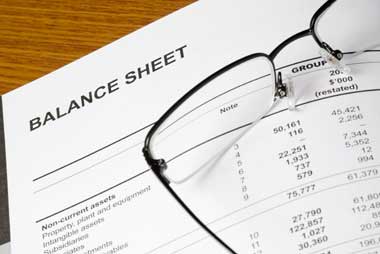Hi! Welcome back guys! Today is our Finance
Day. Our topic now is the balance sheet. Balance sheet is one of the major
financial statements used by accountants and business owners. The balance sheet
presents company’s financial position at the end of a specified date. Some
explain the balance sheet as an accountant’s snapshot of a firm’s accounting
value at point in time.
The function of balance sheet for company is:
- Exhibits the true financial position of a firm at a particular date
- Financial position can be ascertained clearly with the help of balance sheet
- Provides valuable information to the management for taking better decision through ratio analysis
- Balance sheet helps in knowing past and present position of company.
5 It is a
mirror of a business
The balance sheet has two sides, which are left
side where the assets placed, and the right side that contains the liabilities
and stockholder’s equity. The balance sheet states what the company owns and
how it financed. The accounting definition that underlies the balance sheet and
describes the balance is:
Assets = Liabilities + Stockholder's equity
Let’s discuss more about the three items above.
1.
Assets
Asset is
a resource with economic value that company own or controls with the
expectation that it will provide future benefits. Assets split into two types,
which are:
- Fixed assets are those that will last a long time. Some fixed assets are tangible, such as machinery and equipment. Other fixed assets are intangible, such as patents and trademarks.
- Current assets are those that have short lives, such as inventory. Product that your firm has made, but has not yet sold, is part of inventory.
Liabilities and Stockholder's Equity
Liability
is a company’s legal or obligations that arise during the course of business
operation. There are two category of liabilities based on how long company’s
must repaid, which are:
- current liability : short term debt (must be repaid within one year)
- long term debt (not must be repaid within one year)
- Stockholder’s equity is the portion of the balance sheet that represent the capital received from investor in exchange for stock, donated capital, and retained earnings. In other words, Shareholder’s equity represents the difference between the value of the assets and liabilities of the company or we can call as a residual claim on the firm’s assets.
The picture following is an example of balance
sheet.
The next meeting, we will talk deeper about how
to create the balance sheet. So, don’t miss it guys. J
Written by Dera Hafiyyan


